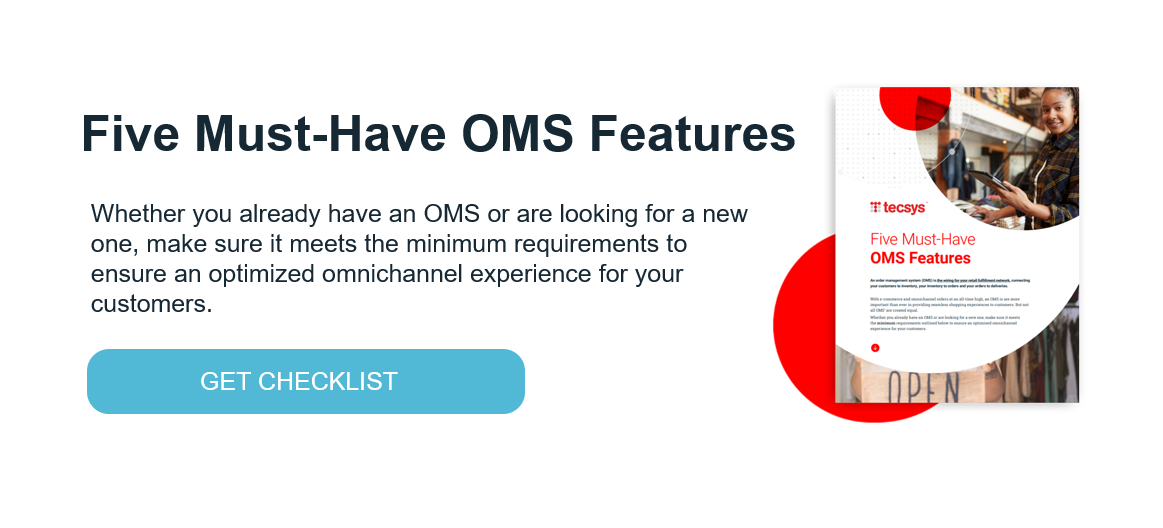Returns: The Hidden Opportunity for Retail

This article was originally published on Retail TouchPoints
Returns provide brands and retailers the opportunity to delight their customers. But not all brands and retailers are seizing this opportunity.
According to the National Retail Federation (NRF), the U.S. market saw over $400B in returns in 2020. If this dollar value were a proxy for revenues, the returns channel would be the second largest global retailer behind Walmart. That is a significant amount of capital tied up in the returns channel!
Historically, returns have been viewed by brands and retailers as a ‘necessary evil’. A study by Shopify states that 44% of distribution center leaders see returns as a ‘pain point,’ a cost center that needed to be tolerated. After all, consumers need to be able to bring back certain items. Goods received might be damaged or the wrong size, or maybe it was another cat sweater from your aunt that just did not have a place in your rotation.
But the drivers behind returns have evolved. Consumers, for example, have started to adopt the ‘bracketing’ strategy. Bracketing is the process of ordering multiple items with the intent of keeping one; effectively, it is bringing the showroom to your living room. This was rendered possible as retailers and brands offered low-cost shipping, unlimited holding periods and easy returns. Retailers like Zappos paved the way for bracketing to become an acceptable ordering method.
As ecommerce matures into adulthood, consumers are taking for granted the ability to return and exchange items at will. Whether it takes the form of prepaid return labels, easy return drop-off locations or returns packaging, the consumer expects to be able to send back inventory — for whatever reason or no reason at all.
According to a recent study, 80% of consumers point to a positive returns process to drive brand loyalty. We should not overlook the rise of subscription-based retail from the likes of Rent the Runway, Stitch Fix, Trunk Club, Le Tote and now Amazon Wardrobe. These are massive returns-oriented services; receive a variety, keep a few and return the rest. The circularity of retail is permeating the landscape.
So how should brands and retailers handle this returns tsunami?
Change your business’ attitude on returns.
Every time your customer engages with your brand is a precious touch point. Rather than seeing returns as a cost center, view them as an opportunity to delight. Too often, the thought of returns is mired by its negative past. As brands like L.L.Bean created an environment of consumer-friendly return policies, that thinking has gone the way of dial-up modems. Most retailers have grudgingly accepted this while customers have happily embraced it. Of course, you should create the internal processes to handle returns, efficiently and cost effectively. But today, the savvy among us are also extracting every ounce of value out of this historically negative process.
So while the returns process should be as painless as possible for your customer, it is also an important touch point to create positive customer experiences and even harvest valuable information. Why are they returning the item? Are they keeping specific items but not others? How was the path to purchase? Can you determine any patterns in the returns, like apparel not fitting as expected or the website description not reflecting the item correctly? Leveraging data insights from that customer touch point can help to make improvements further up the value chain.
Run the numbers.
In business school, I remember a specific professor who would ask us, ‘Did you run the numbers?’ whenever one of us brought up some amazing new idea. His question was too often met with silence, evoking that whole ‘a goal without a plan is just a wish’ maxim. That lesson rings true when applied to returns. We need to truly understand what is involved with ingesting returns: What are all the costs associated with taking back product? What are the labor costs, holding costs, handling costs and transportation costs? Will they require manual inspection, which takes time and requires labor? By some accounts, the costs associated with returns can be over 8% of the total sales in consumer goods.
But don’t stop there. Dive deeper into the numbers to determine how quickly some of those returns can be injected back into your available inventory. Could the returns channel supplement current inventories? Could returns reduce how much inventory you need to hold or order at the front end of the supply chain? We know too well, ‘If I can’t measure it, I can’t manage it,’ and that measurement should not terminate at fulfillment. When it comes to returns, your ability to properly measure the direct costs associated with their processing, as well as determining the opportunity cost, is crucial. Otherwise, you subject yourself to detrimentally mishandling and overspending.
Control what you can.
According to a recent study, most reasons for returns are within your control: damaged items, mismatched descriptions and late deliveries are all within your realm of influence. By some estimates, 57% of returned goods are controllable in nature, so it is highly advisable to investigate what factors are driving your returns. Whether it is an underperforming 3PL, a distribution center that needs new training, or system shortcomings, you need to be a forensic returns investigator to audit where expectations are not being met.
A common disconnect, for example, is that there is dissonance between the goods described and the goods delivered. To remedy this, some brands lean on crowdsourcing; companies like Cole Haan, Patagonia and Jomashop encourage their customers to add video testimonials about the products. Providing greater clarity on the product should ensure that new customers’ expectations are a closer match to what they receive. Whatever your research reveals, focus on what you can control and determine how to best manage those variables.
Overcommunicate with your customers.
Similar to the need to be transparent when it comes to delivery timing and cost, your customers should clearly understand what your return policy is ¾ from time horizon to conditions to exceptions. And the numbers do not lie — 60% of shoppers review the returns policy before clicking purchase. Avoid the temptation to make the rules secretive in hopes of dissuading your consumer from seeking to return an item. Consumers are too savvy and they have almost unlimited access to information. But consider going beyond simply communicating the returns policy and be transparent with regard to the impact and cost returns can have on the supply chain.
According to Vogue Business, U.S. returns alone contribute more than five billion pounds of landfill waste and 15 million tons of carbon emissions per year. As a growing number of consumers are making purchase, and therefore return, decisions with an eye toward sustainability, ensure you clearly outline how you are handling the sustainable side of returns. Get ahead of the curve and communicate with your customers what your overall sustainability strategy is as it relates to returns. It is not simply about taking back inventory from your customers in a frictionless way, but what you are doing with those returns and how you are being good stewards of the environment.
Returns are as much as a part of modern retail as having a digital presence. And in a world where personal connections with the consumer are precious and often rare, they provide a valuable touch point with the customer. While the industry is still broadly stuck in the mindset that returns are a roadblock, it is high time that the forward thinkers seize this customer touch point and strive to provide a positive experience through it. But this starts with a change in attitude. Retailers and brands must view returns with the proper lens; otherwise they will not reimagine them in a manner that drives value for both vendor and consumer.




